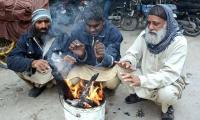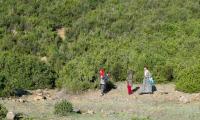The constitution of Pakistan is an emotionally stirring and beautiful read. Subservient to Allah’s sovereignty, it is a manifestation of the will of the people of Pakistan to establish an order. An order that, among many other promises, guarantees the people of Pakistan certain fundamental rights that must always be accessible to them. An order that preaches equality. An order that promises social justice.
The people explained why this order was being established too. It was ‘so that the people of Pakistan may prosper and attain their rightful and honoured place amongst the nations of the world and make their full contribution towards international peace and progress and happiness of humanity’. For this, the people of Pakistan ‘adopt, enact and give to ourselves, the constitution’.
The constitution is an emotional document because if one truly reads and understands it, and takes its word and promises at face value, only the ill-fated or misguided would hesitate in laying their lives for it. Everything else aside, the constitution extends to the people a fundamental right to life and additionally to a clean, healthy and sustainable environment.
And so we turn to Lahore. Lahore, the city that is supposedly the crown jewel of Pakistan, and certainly the Punjab at a minimum. The city that is to testify to the progression and transformation achieved by each successive government. The city of underpasses, signal-free roads, the ring road, the metro bus, the orange line train and amenities galore. The historically cultural hub of Punjab.
The majesty of Lahore would, on paper, exude the right of life. It would be the physical manifestation of the right to a clean, healthy and sustainable environment. What would the people of Pakistan not give to live in Lahore and dine on its buffet of fundamental rights? Right?
And yet here we are. In Lahore – the city that shrouds itself every autumn in thick, polluted, dangerous air. The city that dances to the songs of smoke and fog. Where children ask whether there is a tasteless barbecue happening nearby that has been kept a secret from them. Where old people pass away from natural causes, and nobody considers the possibility that perhaps they lost a decade to the air they breathed. All the people can do is alarmingly shop for overpriced air purifiers, just to try and avail themselves of that fundamental right to life.
Over the past six years, when the smog phenomenon has progressively gotten worse, it does not appear that any concrete steps have been taken by the government to defend this right to life. This is tied to the unfortunate reality that any steps that are to be taken are not physically tangible. There is no opening ceremony to be attended.
There is no fanfare to be had. Therefore, rather than spend time and resources on finding permanent solutions, it is easier and more convenient to set up ‘free masks’ kiosks. It is more efficient to declare ‘hot spots’ and issue notifications. It is politically more expedient to suggest a dialogue with the neighbouring country. It is easier, unfortunately, than to deliver on the guarantee of the right to life.
It is bewildering that there also does not seem to be a consensus on the principal cause of smog in Lahore. Winds from Indian Punjab are a convenient answer – as is the burning of crops, industrial and vehicular pollutants, and low-grade fuel usage. Yet, nothing has been done on any of these fronts, except that the level of alarm expressed on each occasion also increases.
There would surely be many scientific reasons for the increased smog in Lahore, which would invite scientific answers and solutions. Sadly, it is also clear that the primary reason the government is inert is on account of their failure to also meet the promises of equality and social justice. In the worst of times, the head of the province is not in the country, much less in Lahore. This is not a slight on any medical issues that she may be facing – but the social injustice and inequality is evident that she has the resources to avail herself of ‘better’ medical care outside of Pakistan, which would further her right to life. Pictures doing the rounds on social media also show her fancily dressed in Geneva, worrying about the worsening condition of smog in Lahore; indubitably her sunglasses hiding away her tears of pain and pity for the people of Punjab.
This is what lies at the heart of the government’s inaction. As long as resources, personal or official, are available that keep you safe, there is no urgency to act. It would be a safe bet to say that the offices of all senior bureaucrats and government officials have air purifiers, and so do their residences. It would also be safe to bet that these would have been purchased, in large part, for official purposes. The servants of the people thus live shielded from the actual effects of the issue, and it has accordingly failed to register with them.
This inequality and social injustice have prevented all recent governments from taking any positive action to combat smog. If the ruler and the ruled cannot look at each other’s shoes, walking the other’s walk is incomprehensible. The people of Lahore, and Pakistan in general, instead of enjoying their guaranteed right to life, fight to survive every day. They fight to believe that the state will not give up on them. They fight back their tears every time their child coughs while trying to fall asleep. But it gets harder with every passing minute, being reminded that the worried rulers are consuming everyone’s share of the right to life.
In ‘Animal Farm’, George Orwell wrote, “All animals are equal, but some animals are more equal than others”. As our beloved Lahore crumbles and our search for our ‘rightful and honoured place’ in the world falters, this is all the more evident 79 years after this book was written.
The writer is a lawyer and an avid golfer – but his right to golf is also curtailed.
There are over 11 million Pakistanis settled abroad, out of which around six million work in Gulf and Middle East
This year alone, US Treasury would have to roll-over $10 to $14 trillion in maturing short-term debt
Tear gas no longer marks just protest sites; it paints entire cities as battlegrounds but then again, PTI did it first
Political structures and governance systems have been central to economic and social development
It is confirmed now 40 Pakistanis had died after boat of migrants had capsized in sea near Greece
Many people believe that in future, AI will play an even more significant role in their lives







